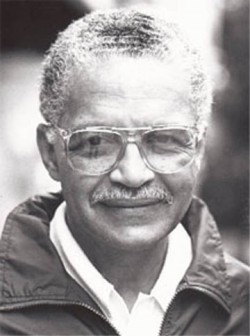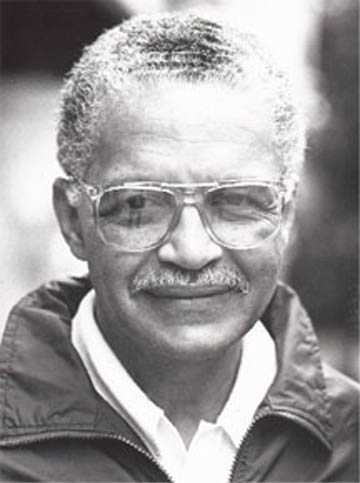By Eusi Kwayana
Elder Eusi Kwayana is an Activist, Writer and Educator.

Yesterday we requested and received a tribute from elder, activist, writer and educator Eusi Kwayana to the late Jan Carew, who transitioned a few days ago at the age of 92 in Louisville Kentucky. For the benefit of our readers, we have included in the original tribute – indicated below in the passages between quotation marks – a few excerpts from an earlier essay written by Kwayana in celebration of Jan Carew’s 80th birthday. That essay, titled ‘Mission Within the Mission,’ refers to the 2002 edition of London based journal Race and Class, which in 2002 published a special edition titled ‘Gentle Revolutionary: Essays in Honor of Jan Carew.’

In his youth he was very comfortable talking with rural elders. In his late eighties he wrote books for children. He engaged his audiences and readers easily, without any flaunting of learning.
A younger Guyanese has just testified by email to how Carew’s early books impressed him. In the late 1940s he cycled from Georgetown every Friday night to the village of Buxton to talk with farmers, a few housewives, workers and young people about their place in the world.
His first marriage to Sylvia Wynter of Jamaica brought them both to Guyana just as she was writing her first novel, the path breaking Hills of Hebron, dealing with the thinking poor of Jamaica striving like the Rastafari and the Jordanites to redefine themselves through a search for God.
His marriage to a woman of European descent brought deep exchanges in England between him and Malcolm X and he reports and explained these in “Ghosts in Our Blood – with Malcolm X in Africa, England and the Caribbean.” In that work he also revealed Malcolm X’s Caribbean heritage. He saw Malcolm X’s work as examining the whole US structure of wealth and power, looking at it from the bottom up. He recommended Malcolm X to those who saw the same thing looking at it from the top down.
The book was partly an assault on the ideas of racial purity from an author who famously warned that the problems of race relations cannot be solved in bed. He dedicates the book to his wife Joy, his daughter Shantoba, the late Victor Ramzes and Miles Fitzpatrick.
Like Barbadian novelist George Lamming in later years and with him earlier, Carew and Guyanese educator O.R Dathorne mounted many conferences on Caribbean and Latin American life.
He worked as Adviser in the PPP’s Ministry of Culture under the premiership of Dr. Jagan, and years later offered environmental advice on forest reservation to the Hoyte Administration. Iwokrama resulted from these recommendations in 1989 in an altered form.
Carew made a thorough exploration of the ways in which a navigator gone astray, Christopher Columbus, opened up the hemisphere to the genocide of the original population. “For him, it was Columbus who wielded the double-edged sword of medieval genocide on the two continents facing each other across the Atlantic, the Americas, and Africa, with extensions to Asia.
Faced with the whole complex outcome of an accomplished, multi-faceted genocide, Carew seems early to have made the resolve to make his jihad the unearthing and revealing of the hidden strengths, hidden genius, and forgotten accomplishments of these magnificent peoples whom history had all but written off.”
“His archeological curiosity of the life of Native Americans elsewhere in the hemisphere led him to the vital knowledge of a grain, which flourished during the ancient American civilizations.”
During his various presentations, he would carry a bag of amaranth seed, promoting its virtues as a nutrient and encourage its cultivation. Amaranth for him was a factor in the cultural reconstruction of the Americas.
For the last several years Jan Carew has been granting interviews at his home to scholars seeking to place him on record, receiving visits from his daughter Shantoba, whose marriage in London he and Dr Joy Carew attended, visiting his nephew in Jamaica or receiving various pilgrims to what for many was a talking shrine of historical and cultural wisdom. Two years ago, he contributed a chapter of a book of mine yet to be published.
Mainly, he has been writing his memoirs, dictating to an assistant because of hand tremors.
But his hand did not shake when he painted. Just about eighteen months ago his paintings were on a nine week exhibition at the University of Louisville, in Kentucky.
Jan Carew attended Berbice High School and has Berbice roots, He clams a distant relationship with the late Philip Moore. As a lecturer at Rutgers and Princeton Universities he brought faculty members from Princeton to Georgetown to see Philip Moore’s work. They were so impressed that they soon after invited Philip Moore as artist in residence at Princeton University.
Much of Jan Carew’s research has been devoted to cooperation between the Africans and the Native Americans, or indigenous peoples in the Americas in the enslavement period. A work rich in rare history is ‘Grenada: the Hour will Strike Again.’
“Grenada: The Hour Will Strike Again, came two years after the Reagan invasion of Grenada in the wake of the implosion of the short lived revolution there.
To heal the trauma of the masses of the people, Carew unearthed and revealed sources of independence in the country itself. It went back to and beyond the struggles of the rebellious African captives, to the epic resistance of the island’s indigenous population.
A few impressions remain with me. One is the guerilla warfare waged by the African captives inspired by Fedon.
Brightest is the Carib remnant who, following their versatile hero Kaierouanne, and rather than suffer defeat at the hands of the overwhelming force of Spaniards, leaped from a cliff into the more congenial ocean, the water the salty primordial matter.
Many Caribbean writers and in English thinkers have overcome the undignified foster mothering of their mother-deprived subjected populations and have sparked a stream of thought and consciousness in the world’s thinking. Carew stands out as the one who restlessly fought in the English language to restore the personality of ancient African and American civilisations and their descendants. Grenada also left a picture of the communications network which the indigenous people enjoyed even after Columbus, of their long boat journeys, their conferences, and federations in the interest of the sovereignty.






